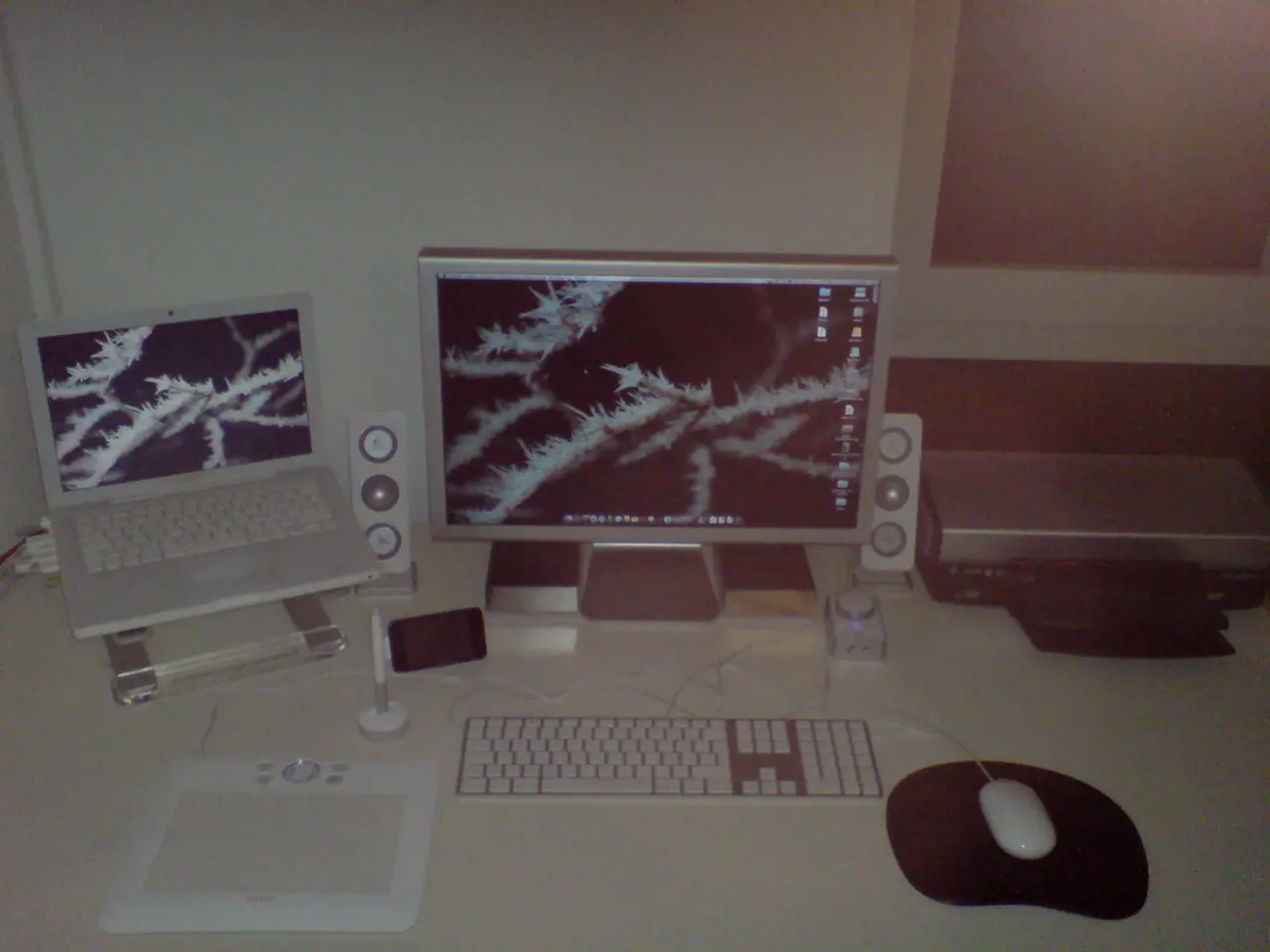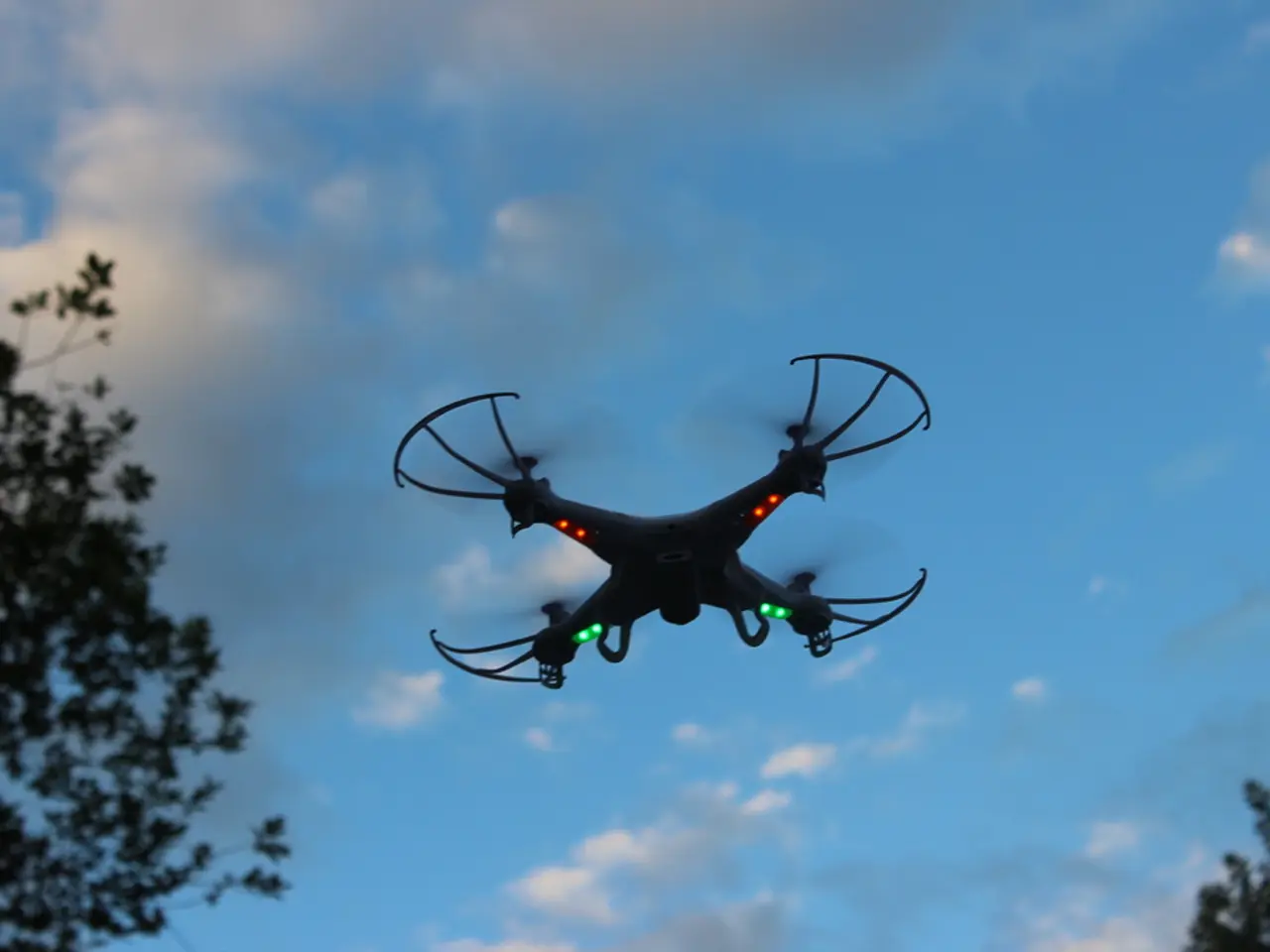Debate sparks over dubious document suggesting interstellar traveler 3I/ATLAS may conceal hostile extraterrestrial technology
In the realm of space exploration, a new debate has arisen concerning the interstellar comet 3I/ATLAS. Discovered on July 1, 2025, this comet has been making waves within the scientific community due to its unusual characteristics and the controversial claims suggesting it might be extraterrestrial technology.
Darryl Seligman, an astronomer at Michigan State University, led the first study quantifying 3I/ATLAS. Initial observations suggest that the comet is a large one, surrounded by a cloud of ice, gas, and dust called a coma, typical of active comets heated by the Sun. The comet's nucleus is estimated to be between 0.8 and 11 km in diameter.
The comet's hyperbolic trajectory, with an unusually high velocity and eccentricity, has led some to question its origins. Avi Loeb, an astronomer at Harvard University, is one of the authors of a paper questioning whether 3I/ATLAS is an alien technological artifact. Loeb suggests that the comet's trajectory, which offers close passes by Jupiter, Mars, and Venus, could provide strategic benefits for a technological artifact surveilling the Solar System, possibly for deploying "gadgets."
However, these claims lack compelling evidence and have not been accepted by the broader scientific community. The overwhelming view remains that 3I/ATLAS is a natural comet, given its observed outgassing and dust coma characteristics typical of icy bodies from space. No direct observations or data support the idea that the object is artificial.
Samantha Lawler, an astronomer at the University of Regina, specializes in solar system dynamics. In her email to Live Science, Lawler stated that the vast majority of scientists subscribe to the idea that extraordinary claims require extraordinary evidence. She also emphasized that the majority of researchers are disappointed with the new paper, as it distracts from the work of other scientists studying the comet.
Despite the lack of widespread acceptance, Loeb defends his position, stating that the hypothesis is an interesting exercise in its own right, and is fun to explore, irrespective of its likely validity. He relates this to the "dark forest hypothesis," positing that extraterrestrial civilizations might avoid contact out of caution.
In summary, while intriguing and worthy of further study, there is currently no compelling evidence that 3I/ATLAS is extraterrestrial technology. The scientific consensus firmly classifies it as a natural interstellar comet, the third confirmed interstellar object known to pass through the Solar System, following 1I/ʻOumuamua and 2I/Borisov.
| Aspect | Scientific Consensus | Controversial Claims | |--------------------------------|-----------------------------------------------------------|-----------------------------------------------------| | Nature | Natural interstellar comet with hyperbolic orbit | Possible alien technological artifact | | Supporting evidence | Trajectory, nucleus with coma, typical comet activity | Unusual trajectory and speed | | Accepted by mainstream science | Yes | No, speculative and not supported by data | | Ongoing investigations | Planned observations, potential spacecraft interception | Hypotheses mostly theoretical without empirical backing|
As 3I/ATLAS makes relatively close approaches to Jupiter, Mars, and Venus, the debate surrounding its origins will undoubtedly continue. Further observations and potential spacecraft interceptions are planned to better understand its nature, not to confirm anything artificial.
- The ongoing debate about interstellar comet 3I/ATLAS has involved discussions about its potential origins, with some suggesting it might be extraterrestrial technology.
- Despite Avi Loeb's controversial claims that 3I/ATLAS could be an alien technological artifact, the majority of scientists have maintained their stance that it is a natural interstellar comet.
- The scientific consensus identifies 3I/ATLAS as a comet with a hyperbolic orbit, a nucleus surrounded by a cloud of ice, gas, and dust, and typical comet activity that is typical of icy bodies from space.
- As 3I/ATLAS approaches Jupiter, Mars, and Venus, ongoing observations and potential spacecraft interceptions will help scientists better understand its nature, not to confirm any artificial origins.




